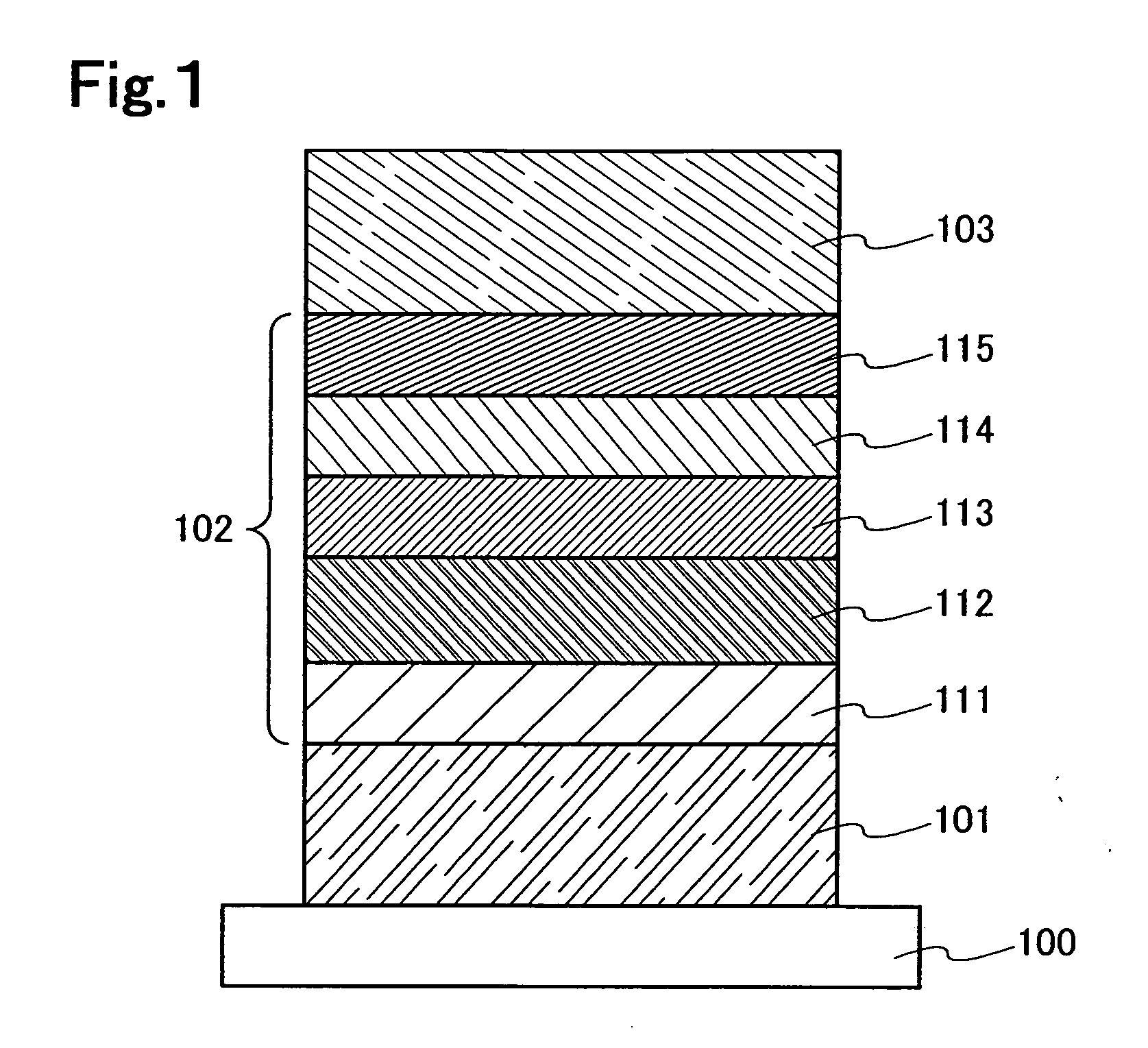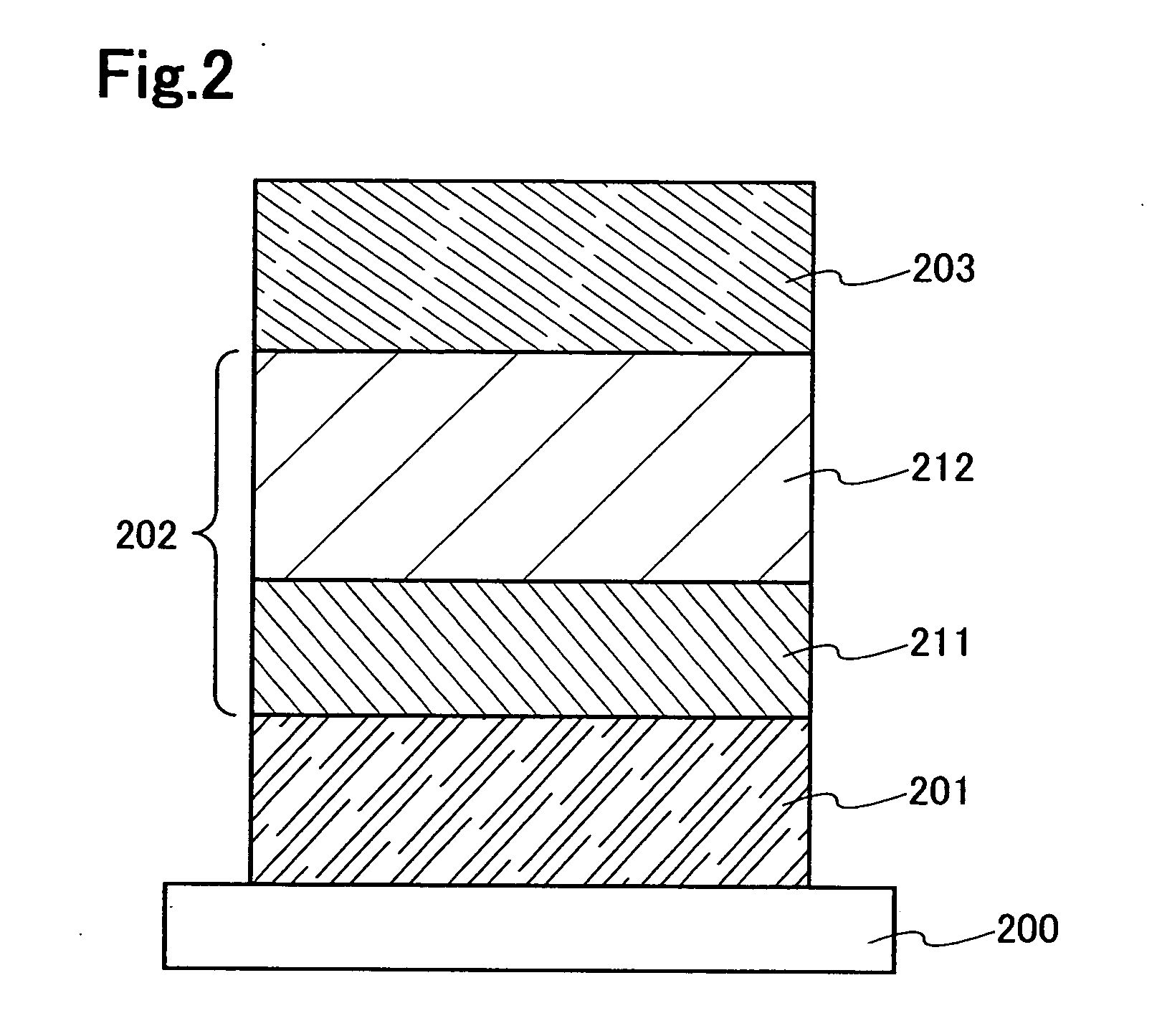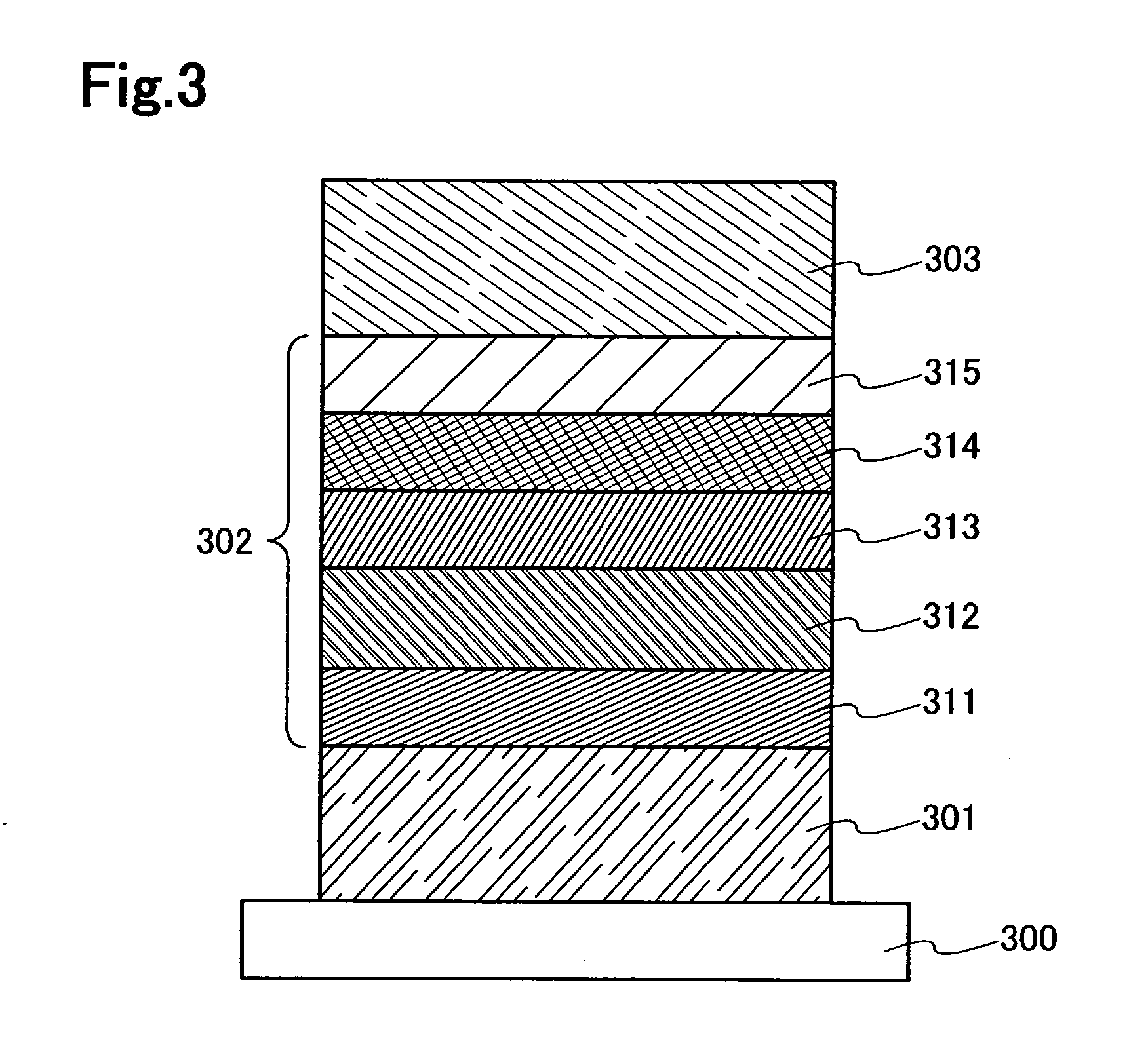Organometallic complex, light emitting element using the complex, light emitting device using the element, and electric apparatus using the device
a technology of complexes and light-emitting elements, applied in the field oforganometallic complexes, can solve problems such as insufficient satisfaction, and achieve the effect of reducing power consumption
- Summary
- Abstract
- Description
- Claims
- Application Information
AI Technical Summary
Benefits of technology
Problems solved by technology
Method used
Image
Examples
embodiment 1
[0119] In Embodiment 1, the structure of a light-emitting element that has a hole injecting layer composed of a low molecular weight material, a hole transporting layer, a hole blocking layer, and an electron transporting layer will be described with reference to FIG. 1.
[0120]FIG. 1 shows a structure in which a first electrode 101 is formed over a substrate 100, a layer 102 including a luminescent material is formed on the first electrode 101, and a second electrode 103 is formed thereon.
[0121] As a material to be used for the substrate 101 here, a material that is used for a conventional light-emitting element may be used. For example, glass, quartz, transparent plastic, and a flexible substrate can be used.
[0122] In addition, the first electrode 101 and the second electrode 103 in Embodiment 1 function as an anode and a cathode, respectively.
[0123] Namely, the first electrode 101 is formed by using an anode material. As the anode material that can be used here, it is preferabl...
embodiment 2
[0136] In Embodiment 2, the structure of a light-emitting element that has a light-emitting layer including an organometallic complex according to the present invention and a hole injecting layer composed of a polymer material, which are formed by a wet process, will be described with reference to FIG. 2.
[0137] Since a substrate 200, a first electrode 201, and a second electrode 203 can be formed in the same way with the use of the same materials as those in Embodiment Mode 1, descriptions thereof are omitted.
[0138] In addition, a layer 202 including a luminescent material is formed by stacking a plurality of layers, in Embodiment 2, formed by stacking a hole injecting layer 211 and a light-emitting layer 212.
[0139] As a hole injecting material forming the hole injection layer, polyethylene dioxythiophene (abbreviation: PEDOT) doped with polystyrene sulfonate (abbreviation: PSS), polyaniline, polyvinyl carbazole (abbreviation: PVK), and the like can be used.
[0140] The light-emit...
embodiment 3
[0142] In Embodiment 3, the structure of a light-emitting element that has a light-emitting layer including two of an organometallic complex according to the present invention and a fluorescent compound, a hole injecting layer composed of a low molecular weight material, a hole transporting layer, a hole blocking layer, and an electron transporting layer will be described with reference to FIG. 3.
[0143] Since a substrate 300, a first electrode 301, a second electrode 303, a hole injecting layer 311, a hole transporting layer 312, a hole blocking layer 314, and an electron transporting layer 315 can be formed in the same way with the use of the same materials as those in Embodiment Mode 1, descriptions thereof are omitted.
[0144] A light-emitting layer 313 in the present embodiment is composed of a host material, an organometallic complex according to the present invention, which is a first guest material, and a fluorescent compound, which is a second guest material. As the host mat...
PUM
| Property | Measurement | Unit |
|---|---|---|
| Luminous efficiency | aaaaa | aaaaa |
Abstract
Description
Claims
Application Information
 Login to View More
Login to View More - R&D
- Intellectual Property
- Life Sciences
- Materials
- Tech Scout
- Unparalleled Data Quality
- Higher Quality Content
- 60% Fewer Hallucinations
Browse by: Latest US Patents, China's latest patents, Technical Efficacy Thesaurus, Application Domain, Technology Topic, Popular Technical Reports.
© 2025 PatSnap. All rights reserved.Legal|Privacy policy|Modern Slavery Act Transparency Statement|Sitemap|About US| Contact US: help@patsnap.com



